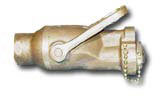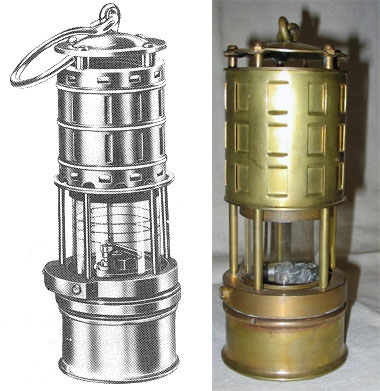|
Investigation Spreads Blame for Typhoon Damage to Ships
Vincennes, Coronado Repair Bills Come to $223,000
Navy Times
www.NavyTimes.com
April 11, 2005
As the ferocious winds of a Pacific typhoon whipped across Navy ships
docked in Yokosuka, Japan, on Oct. 9, mooring lines holding the cruiser
Vincennes to the pier started snapping under the strain.
With the superstructure of the 7,000-ton ship acting like a sail,
Vincennes was soon being blown adrift toward the harbor. At one point,
sailors hacked through the remaining mooring in a frantic attempt to
prevent the ship’s port side fantail – with its Harpoon missile
canisters – from ripping across the bow of the nearby cruiser
Chancellorsville.
Minutes later, sailors released the ship’s starboard anchor to try to
hold the vessel in place.
But the anchor dragged and Vincennes veered without power across the
harbor in wind gusts hitting 75 knots. Thirty-four minutes later, it
plowed into the starboard side of the command ship Coronado, coming to
rest alongside its sister ship as sailors safely lashed the two vessels
together.
Despite damages totaling $223,000, no one was injured.
But a Navy investigation of what happened that afternoon faulted
local commanders for an over-reliance on what turned out to be woefully
inaccurate weather advisories. It also chastised them for neglecting a
long-standing Navy tradition of observing local weather conditions and
initiating action on their own to safeguard ships.
The report also criticized local Navy forecasters for failing to
understand that a typhoon was aiming straight at Yokosuka, and for
ignoring radar information that could have given the ships vital warning
time to adequately prepare in the last hours before it hit.
“I am convinced that the incident and resultant damage were wholly
preventable,” wrote Adm. Walter F. Doran, Pacific Fleet commander, in
his Dec. 14 endorsement of the investigation.
Following the investigation, there were no leadership changes at any
commands involved, and no punitive action was taken.
The investigation described the events leading up to the arrival of
the typhoon as follows:
- Monday, Oct 5: The Joint Typhoon Warning Center in Pearl Harbor,
Hawaii, began tracking a tropical depression labeled 26W located 800
miles east-northeast of Manila, Philippines, moving toward Japan.
- Wednesday, Oct 6: Naval Pacific Meteorological and Oceanographic
Center Yokosuka forecasters started monitoring the intensifying
storm, now categorized as a typhoon, and began communicating
frequently with the typhoon warning center.
In a briefing given to Commander, Naval Forces Japan, and Commander,
7th Fleet, by NPMOC that afternoon, the storm’s predicted path was
given as crossing the island of Honshu, with its closest point of
approach about 164 miles away from Yokosuka.
- Thursday, Oct 7: That morning, the typhoon’s predicted track
brought it within 45 miles of Yokosuka, and Tropical Cyclone
Condition of Readiness “Storm Watch” was set. The condition means
that while destructive winds are currently not forecast to occur,
there still is a possibility of danger from the proximity of the
storm and un-forecasted changes in its track or strength.
After reviewing U.S. and Japanese weather Web sites, Fleet
Activities Yokosuka port operations personnel readied for a possible
typhoon, moving small boats into dry dock and shifting the destroyer
Cushing to a less-exposed berth.
In another move, the port operations officer advised all nine Navy
ships in port that storm lines and spring lay wire ropes, mooring
lines run to help secure a ship in port in bad weather, were
available at Port Operations. None requested the extra lines.
- Friday, Oct 8: Port Operations again advised ships that
additional storm lines were available for issue, but none were
requested.
That afternoon, NPMOC advised Navy commands that destructive winds
were not forecast for Yokosuka, but that conditions could change and
forecasters would continue to watch and advise.
- Saturday, Oct 9: Preparing for high winds, eight of the nine
Navy ships in harbor had their own storm lines in use, and five
ships placed anchors underfoot.
The report found that throughout the day, information from Japanese
coastal weather radars that could have helped Navy forecasters
figure out the oncoming path of the typhoon was not plotted.
Just before noon on Saturday, the NPMOC’s commanding officer came
into the command center, reviewed the situation with his watch team
and left after 21 minutes.
The last discussions about the typhoon between NPMOC and the
Yokosuka-based Navy commands took place at 1:30 p.m.
Almost three hours later, the typhoon hit at 4:48 p.m., Vincennes
parted No. 1 mooring line, then lost three more lines, going “dark”
as the shore utility lines powering the ship snapped loose as it
pivoted away from the berth.
The investigation laid fault across several Navy commands, including:
- NPMOC: Forecasters were faulted for not correctly predicting the
strength of winds likely to hit Yokosuka, for not plotting the
Japanese radar data, for failing to determine that a typhoon would
make a direct hi and not giving adequate warning to local Navy
commands.
- Commander, Naval Forces Japan: Faulted for not choosing to go to
a higher typhoon readiness level, which could have given local
commands a stronger warning to get ready for a typhoon.
- Commanders 7th Fleet, Carrier Strike Group Five, and Destroyer
Squadron 15: All faulted for focusing on the safety of the destroyer
Curtis Wilbur and cruiser Lake Erie in the Sea of Japan, and for not
paying enough attention to the possibility of the typhoon hitting
Yokosuka.
- Commanding officer, Vincennes: Faulted for allowing both of the
ship’s shafts to be “tagged out”
|



